Lang Son, gate of the North
The
province of Lang Son, a mountainous region in Northern Vietnam, is positioned as a
strategic crossroad at the Chinese border. It has always played a major role, ensuring a vital corridor for trade and national defense. It is within this specific geographical and historical context that the Tam Thanh site is anchored.
Buried in the mineral depths of the eponymous mountain, the
Tam Thanh Pagoda (
Chùa Tam Thanh) is one of the most emblematic and oldest religious, cultural, and natural complexes in Northern Vietnam. This remarkable place represents a unique convergence of geology, imperial history, and Vietnamese religious syncretism.
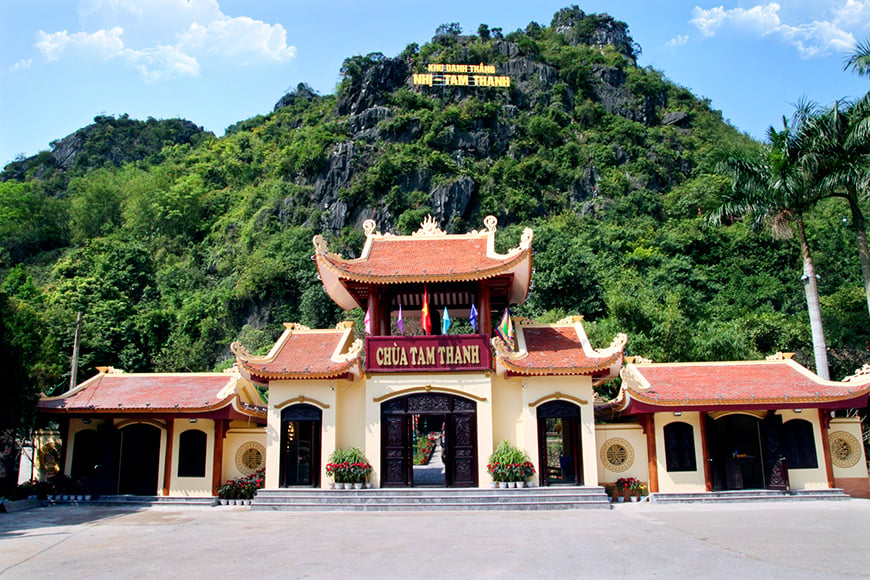 Chua Tam Thanh, a grotto pagoda in Lang Son Province
Chua Tam Thanh, a grotto pagoda in Lang Son ProvinceLocation and access
Dating primarily from the
Lê Dynasty and still little known to foreign travelers, Tam Thanh is among the most emblematic religious, cultural, and natural complexes in Northern Vietnam.
The site, which houses a remarkable
grotto pagoda, is located in the lands of the Lộc Bình district, in the province of Lạng Sơn, in the northeast of the country. Situated at the western entrance of the provincial capital,
Tam Thanh benefits from a spectacular geological setting and easy access thanks to good road links.
Lang Son city, positioned on the Vietnam-China economic corridor, is well served: the bus terminal, for example, is only 17 km from the Hữu Nghị border crossing.
From Hanoi, the bus is the most common and economical choice. With regular departures from major capital stations, particularly My Dinh and Gia Lam, the journey generally lasts between 2 and 3 hours, for an average cost hovering around 15 USD. It is, of course, possible to choose to go by car, the fastest option. Allow less than two hours to cover the approximately 125 km separating the millennial capital from Lang Son. However, the time saving results in a significant increase in costs.
Once arrived, you must climb about thirty stone-carved steps before entering the natural cavity, as if rising toward the sacred.
Visit tips: The visit is possible all year round. Bring good shoes for the steps and a lamp to better admire the details within the cave.
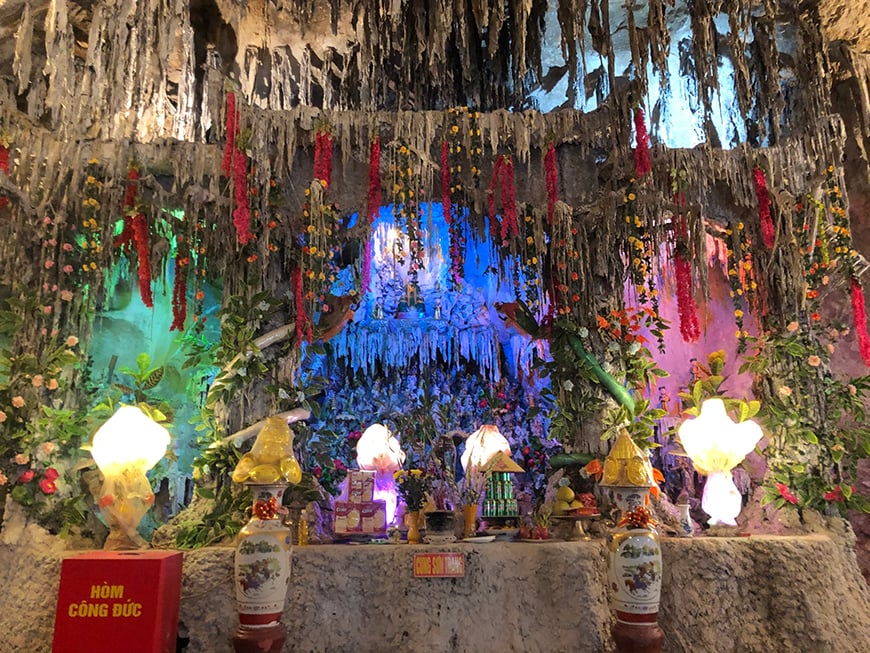 Altar for the Mother Goddess Thượng Ngàn, the Holy Mother who reigns over the mountains and forests
Altar for the Mother Goddess Thượng Ngàn, the Holy Mother who reigns over the mountains and forestsTaoism as a heritage
The
Tam Thanh site is not a simple isolated cavity but a karst system encompassing
three distinct caves:
Nhat Thanh,
Nhi Thanh, and
Tam Thanh. It is in the latter that the Tam Thanh Pagoda, the spiritual heart of the complex, was established.
The antiquity of the site dates back at least to the Lê Dynasty (980–1009), a period during which the pagoda is believed to have been built. It was later developed and embellished under the Later Lê (15th–16th centuries), with the installation of major statues.
Before becoming a major Buddhist center, the pagoda honored the deities of
Taoism. Its name, "Tam Thanh," actually means the "
Three Pure Ones" (or "Three Clarities"), in reference to the three highest deities of the Taoist pantheon (Ngoc Thanh, Thuong Thanh, and Thai Thanh). However, it could also derive from the cave's acoustic phenomena, referring to the "
Three Voices" or "Three Echoes" naturally produced by water and resonant sounds in the cavity.
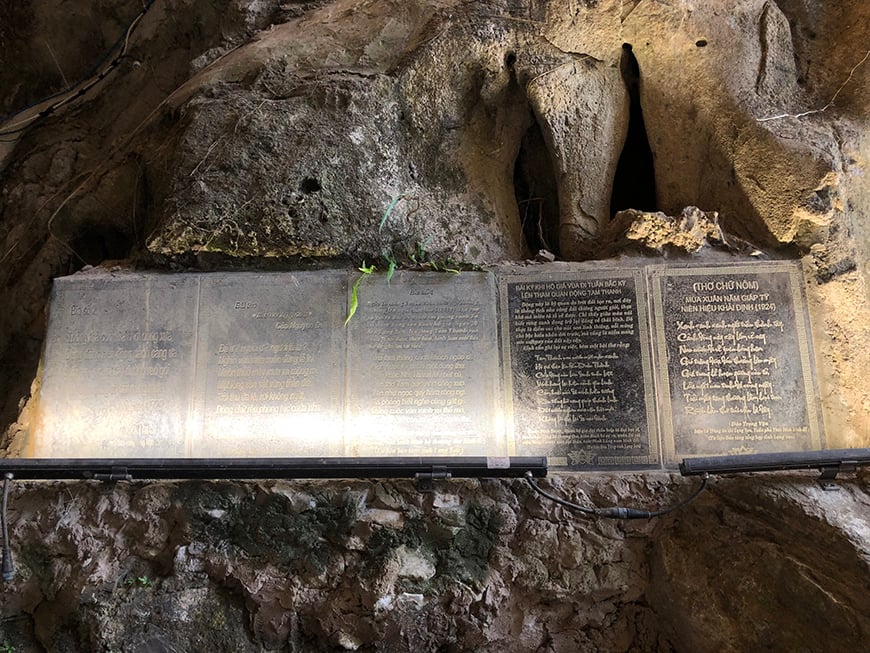 The cave also functions as a genuine inscription archive
The cave also functions as a genuine inscription archiveA poetic and epigraphic archive
The importance of
Tam Thanh goes beyond the religious sphere. The site was once a privileged place of contemplation for the Vietnamese intellectual elite, particularly officials on missions to China.
The scholar and poet
Ngô Thì Sĩ (1726-1780), then governor of Lang Son, left an indelible mark there. One of his
poems,
engraved on the cave wall, celebrates the grandiose beauty of the place and thus integrates the site into the classical poetic tradition. The cave also serves as a true
epigraphic archive, with verses left by other ambassadors and travelers attesting to its role as a meditative stop on the northern route.
Syncretism and symbols
The Tam Thanh Pagoda is one of the clearest expressions of Vietnamese religious syncretism (Tam Giáo). Although primarily a Buddhist center today, it merges Confucianism, Buddhism, Taoism (which gave it its name and its major festival), and the cult of the Mother Goddesses—Mẫu (veneration of natural forces and fertility).
This syncretism is found in the arrangement of the cave's great hall: at its center, on a natural stone throne shaped like a lotus, is a statue of Confucius, symbolizing social order, morality, and good governance. He is flanked by Buddha on his left and Lao-Tzu on his right.
In addition to this triptych, the cave houses an emblematic figure: a colossal statue of the Amitābha Buddha (A Di Da), 2 meters high, sculpted directly into the rock face. Dating from the Later Lê Dynasty, this monolithic work powerfully attests to the enduring fervor of pilgrims and the successful integration of Buddhist worship into this natural environment.
Geomancy and protection
The rock architecture of
Chùa Tam Thanh, often described as a "
temple without a roof," merges into the limestone structure, bathed in a constantly cool atmosphere conducive to contemplation.
The cave entrance was chosen according to the principles of geomancy (
Feng Shui –
Phong Thuy, in Vietnamese). The surrounding mountain range is believed to evoke a "herd of elephants lying down in the meadow." In the language of Feng Shui, this configuration symbolizes a massive and stable structure, ensuring
protection and lasting prosperity for the city of Lang Son.
Establishing such an important place of worship here symbolically guaranteed the stability and security of the territory, which is essential for a strategic border city.
The myth of Lady To Thi
Although not directly linked,
the Tam Thanh site is steeped in the aura of the myth of
Lady To Thi.
Located nearby, the legendary
To Thi Rock (Vong Phu Thach) is perceived as the lady herself, petrified while eternally waiting for the return of her husband who left for war or distant trade.
This myth is a powerful symbol of
marital fidelity and eternal love. In the context of a border region historically marked by conflicts and uncertainty, the legend of To Thi embodies
constancy and loyalty, offering a moral pillar against instability and reinforcing Vietnamese identity in this strategic area. This symbol attracts many pilgrims and visitors.
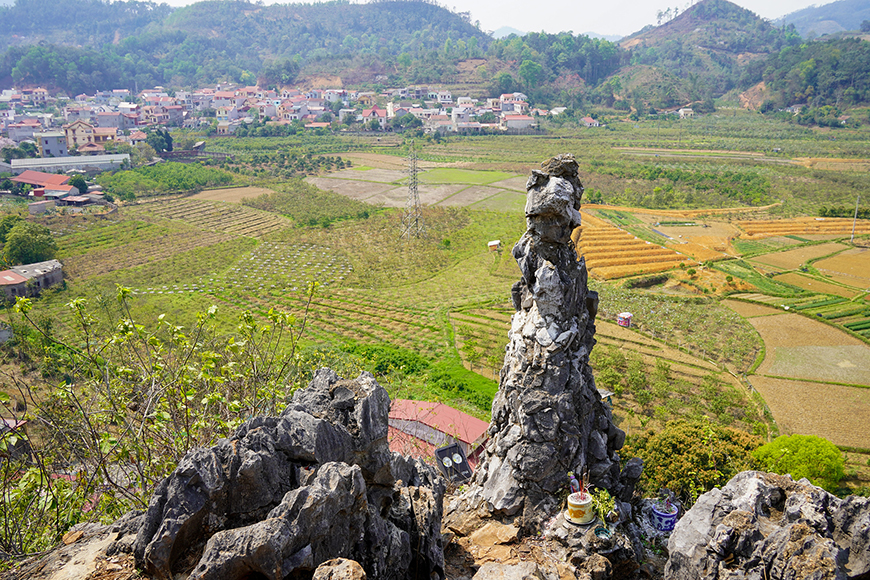 Tam Thanh complexe is under the protection of Nui-Lau-Vong-Thi | Photo : Mr Linh's Adventures
Tam Thanh complexe is under the protection of Nui-Lau-Vong-Thi | Photo : Mr Linh's AdventuresA complete tourist circuit
Since 1962, Tam Thanh has been registered as a
National Historical and Cultural Vestige of Vietnam. Along with the neighboring
Nhi Thanh Cave, it is part of the "
Eight Most Beautiful Sites of Lang Son" and attracts approximately 200,000 visitors per year.
The site is part of a broader circuit that allows visitors to understand the entire history and culture of Lang Son. Exploring the Tam Thanh Cave and To Thi Mount alone can take two to three hours.
Continue your itinerary with
Nhi Thanh Cave. Neighboring Tam Thanh, this cave takes its name from the pseudonym of Ngô Thì Sĩ. Known for its stalactite formations and historical inscriptions, it houses a small temple dedicated to Confucius, highlighting its role in the region's literary tradition. Next, not far from the caves, are the ruins of the
citadel of the Mac dynasty (16th century). Witnesses to feudal history, they offer a striking panorama and recall the historical defensive and strategic function of Lang Son.
For less spiritual sustenance, head to the
Ky Lua market, a historic market whose existence dates back to the 15th century. This important trading hub is a true commercial crossroad for the different ethnic groups of the region. Here, you will find agricultural products, medicinal plants, and local culinary specialties.
For a change of scenery, visit the
Dong Dang Border Market. Close to the Hữu Nghị crossing, this market illustrates the effervescence of Sino-Vietnamese exchanges. Visitors can observe the variety of imported products and the dynamic atmosphere typical of border areas.
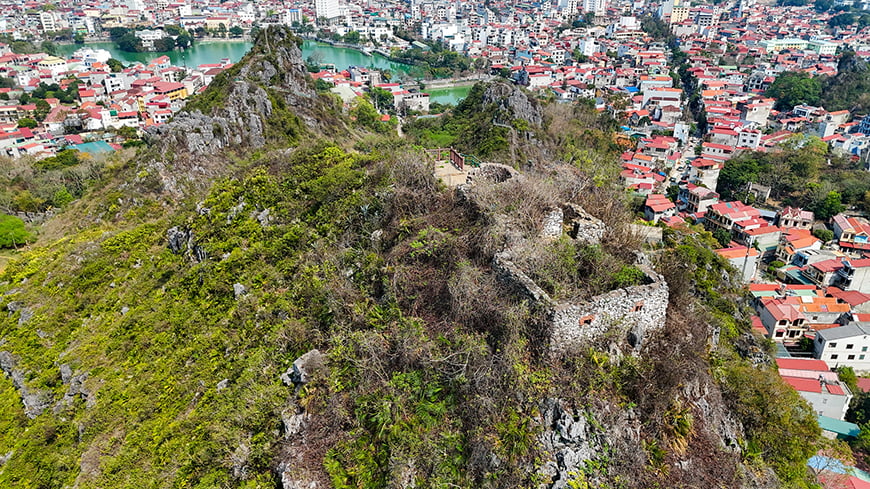 Aerial view highlighting Mac Citadel | Photo : Mr Linh's Adventures
Aerial view highlighting Mac Citadel | Photo : Mr Linh's Adventures
Tam Thanh, at the crossroads of history and the sacred
The entire complex of
Lang Son sites is inextricably linked to its border geographical position. The fact that deep spiritual sites (Tam Thanh, Nhi Thanh) are surrounded by military vestiges (Mac Citadel) and commercial centers (Ky Lua, Dong Dang) is a manifestation of Lang Son's unique character. This region has always been obliged to assert its strong cultural and spiritual identity while being confronted with the economic and military realities of the Vietnamese periphery.
As a strategic economic corridor to China, Lang Son has always been forced to affirm its strong cultural and spiritual identity in the face of military and economic realities.
A stop at Tam Thanh is an immersion into the
spiritual and historical heart of this border city, offering a moment of contemplation in a region historically exposed to tensions.